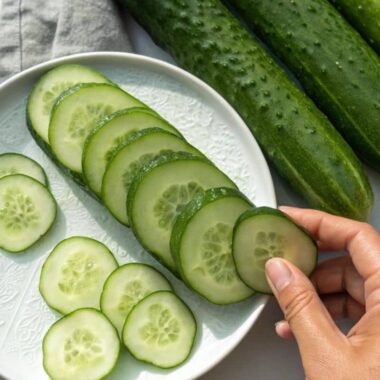Did you know that Persian cucumber might be the crunchiest, juiciest secret to a healthy lifestyle? Whether you’re snacking, cooking, or looking for a natural way to boost your skin, this tiny yet mighty vegetable has so much to offer. Let’s dive into the world of Persian cucumber, and I promise—you’ll fall in love with its benefits by the end of this article!
Table of Contents
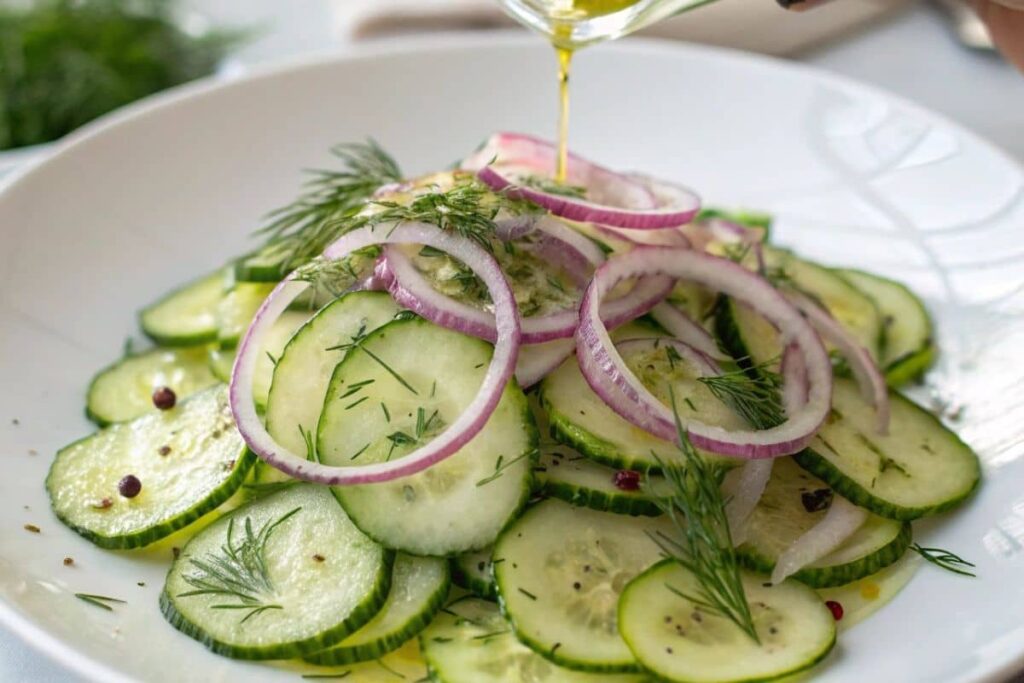
What Are Persian Cucumbers?
These smaller, seedless cucumbers are packed with flavor and nutrients. Unlike some larger varieties, which can be watery or bland, this type is crunchy, slightly sweet, and incredibly refreshing.
Origin and History
Ever wondered where these crisp cucumbers come from? They have deep roots in the Middle East, particularly Iran (formerly Persia). For centuries, they’ve been a staple in Persian cuisine, valued for their fresh taste and versatility. More than just a vegetable, they’re a piece of culinary history!
Characteristics That Make Them Unique
What sets Persian cucumber apart from its cousins?
- Size: Smaller than the average cucumber, they fit perfectly in your hand.
- Skin: Thin and smooth, you don’t even need to peel it.
- Seeds: Practically seedless, so no awkward crunch or bitterness.
- Flavor: Naturally sweet and refreshing—think of it as nature’s candy!
Nutritional Value of Persian Cucumbers
You’re probably asking, “Are Persian cucumbers actually healthy?” Oh, absolutely! They’re not just low in calories but also packed with nutrients that your body craves. Here’s a quick breakdown:
| Nutrient | Amount (per 100g) |
|---|---|
| Calories | 15 kcal |
| Water | 95% |
| Vitamin C | 7% of the RDI |
| Vitamin K | 16% of the RDI |
| Potassium | 147 mg |
| Fiber | 0.7 g |
💡 Did you know? Persian cucumber is basically a hydration booster for your body. With 95% water content, it’s like drinking a glass of water—just crunchier!
How Persian Cucumbers Differ from Other Cucumbers
You might be wondering, “How is Persian cucumber any different from regular or English cucumbers?” Let’s break it down:
Persian Cucumber vs. English Cucumber
- Size: Persian cucumbers are shorter and easier to handle.
- Flavor: Persian cucumbers are sweeter, while English cucumbers lean more neutral.
- Skin: Persian cucumber skin is tender, while English cucumber skin can be waxy.
Persian Cucumber vs. Pickling Cucumber
- Seeds: Persian cucumbers are nearly seedless, but pickling cucumbers are full of seeds.
- Usage: Persian cucumbers shine raw, while pickling cucumbers are designed for brining.
Common Uses of These Crisp Cucumbers
Now, let’s get to the fun part—eating! These cucumbers are a kitchen favorite, and here’s why:
Culinary Delights: Salads, Sandwiches, and Dips
This variety is the perfect addition to almost any dish. Chop them up for a quick salad, layer them in sandwiches for extra crunch, or blend them into a tzatziki dip bursting with flavor. Your options are endless!
Refreshing Additions to Beverages and Smoothies
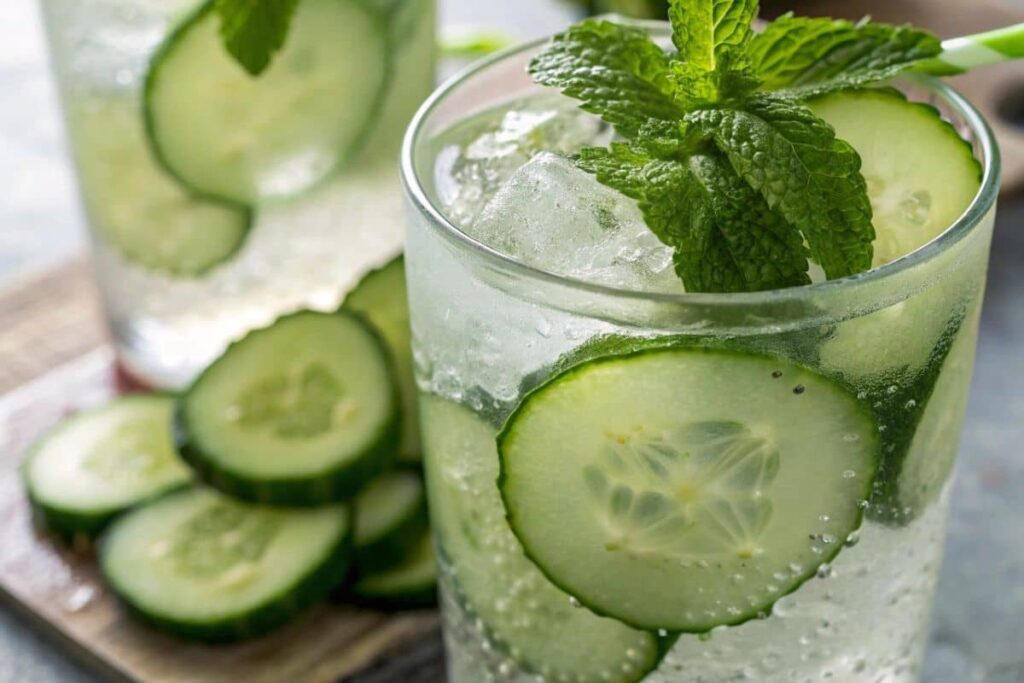
Sounds unusual? Trust me, adding cucumber to smoothies gives them a refreshing twist. Pair it with mint and lime, and you’ve got yourself a spa-worthy drink that’s both hydrating and delicious.
Can You Cook Them?
Surprisingly, yes! While they’re mostly enjoyed raw, they can also be lightly sautéed or roasted. This brings out a mild sweetness that works beautifully in stir-fries or warm dishes.
“Persian cucumbers are like the Swiss Army knife of vegetables—small, versatile, and incredibly useful!”
Growing Persian Cucumbers: Tips and Tricks
Thinking about growing your own cucumbers? It’s easier than you might think! These little green gems are not only fun to grow but also incredibly rewarding. Let’s explore how to cultivate them successfully.
Best Soil and Climate for Cultivation
These cucumbers thrive in well-drained, nutrient-rich soil with plenty of sunlight. They prefer warm temperatures, making them ideal for spring and summer planting. Keep the soil moist but avoid overwatering to prevent root rot.
- Soil pH: Aim for a slightly acidic to neutral range (6.0–7.0).
- Temperature: They love warm weather! Keep the soil temperature around 70°F (21°C) or higher.
- Sunlight: Full sun exposure is key for maximum growth.
💡 Pro tip: Start your seeds indoors if you live in a cooler climate, then transplant them once the weather warms up.
Watering and Fertilizing Requirements
Persian cucumbers are thirsty plants. Regular watering ensures they grow crisp and juicy.
- Watering: Keep the soil moist but not soggy. Overwatering can lead to root rot.
- Fertilizer: Use a balanced fertilizer every two weeks to keep the plants happy. Look for one high in nitrogen to encourage leaf growth.
Common Pests and How to Prevent Them
Pests like aphids and cucumber beetles can cause trouble.
- Natural Remedies: Try neem oil or insecticidal soap.
- Prevention: Use row covers to keep pests away from young plants.
Persian Cucumbers in Recipes: Delicious Ideas
Now that you’ve got fresh cucumbers, it’s time to put them to good use in the kitchen. Here are some mouthwatering recipes to try!
Crisp Cucumber and Dill Salad 🥒🌿
This refreshing, tangy salad is perfect as a side dish or a light meal. It’s quick, easy, and highlights the crunchy texture of fresh cucumbers. Simply toss sliced cucumbers with dill, lemon juice, olive oil, and a pinch of salt for a simple yet flavorful dish.
Ingredients
| Ingredient | Quantity |
|---|---|
| Persian cucumbers | 4, thinly sliced |
| Fresh dill | 2 tablespoons, chopped |
| Red onion | 1 small, thinly sliced |
| Olive oil | 2 tablespoons |
| Lemon juice | 1 tablespoon |
| Garlic | 1 clove, minced |
| Salt and pepper | To taste |
Instructions
- Slice the cucumbers and red onion thinly. Place them in a large mixing bowl.
- Add the chopped dill to the bowl.
- In a small bowl, whisk together olive oil, lemon juice, minced garlic, salt, and pepper.
- Pour the dressing over the cucumber mixture and toss until everything is evenly coated.
- Let the salad sit for 10–15 minutes in the fridge before serving to let the flavors meld.
Pro Tip: For an extra crunch, add some toasted almonds or pumpkin seeds as a topping.
Cucumber Tzatziki Dip
This creamy, cool dip is perfect for pairing with pita bread, fresh veggies, or grilled meats. It’s a healthier alternative to traditional dips and is packed with flavor.
Ingredients
| Ingredient | Quantity |
|---|---|
| Persian cucumbers | 2, grated and drained |
| Greek yogurt | 1 cup |
| Garlic | 1 clove, minced |
| Fresh dill | 1 tablespoon, chopped |
| Lemon juice | 1 teaspoon |
| Olive oil | 1 teaspoon |
| Salt and pepper | To taste |
Instructions
- Grate the cucumbers and place them in a clean kitchen towel. Squeeze out as much liquid as possible to prevent a watery dip.
- In a medium bowl, combine the grated cucumber, Greek yogurt, minced garlic, and chopped dill.
- Add the lemon juice, olive oil, salt, and pepper to the mixture. Stir well to combine.
- Cover the bowl and refrigerate for at least 30 minutes to allow the flavors to develop.
- Serve chilled with pita bread, veggie sticks, or as a sauce for grilled meats.
Pro Tip: For a zesty twist, sprinkle some sumac or paprika on top before serving.
Persian Cucumbers with Yogurt and Dill
This creamy, refreshing dish is a crowd-pleaser and pairs beautifully with Mediterranean or Middle Eastern meals. It’s perfect as a dip, a salad, or even a light appetizer.
Ingredients
| Ingredient | Quantity |
|---|---|
| Persian cucumbers | 3, diced or sliced thin |
| Greek yogurt | 1 cup |
| Fresh dill | 2 tablespoons, chopped |
| Garlic | 1 clove, minced |
| Lemon juice | 1 tablespoon |
| Olive oil | 1 teaspoon |
| Salt | 1/2 teaspoon |
| Black pepper | 1/4 teaspoon |
Instructions
- Prepare the Cucumbers: Wash and dice or thinly slice the Persian cucumbers. For extra crunch, leave the skin on, as it’s thin and tender.
- Make the Yogurt Mixture: In a medium bowl, combine Greek yogurt, minced garlic, fresh dill, lemon juice, olive oil, salt, and black pepper. Stir until the mixture is smooth and well-blended.
- Combine: Add the cucumbers to the yogurt mixture and gently toss until the cucumbers are fully coated.
- Chill: Cover the dish and refrigerate for at least 15–20 minutes to let the flavors meld.
- Serve: Transfer to a serving bowl, drizzle with a little olive oil on top, and garnish with extra dill or a sprinkle of black pepper.
Pro Tip: For a nutty twist, sprinkle toasted pine nuts or almonds on top before serving.
Serving Suggestions
- Serve as a refreshing side dish with grilled meats like chicken or lamb.
- Pair with warm pita bread or crackers for a light snack.
- Use as a topping for baked potatoes or roasted vegetables.
This dish is like a taste of summer—cool, creamy, and filled with vibrant flavors! 🥒✨
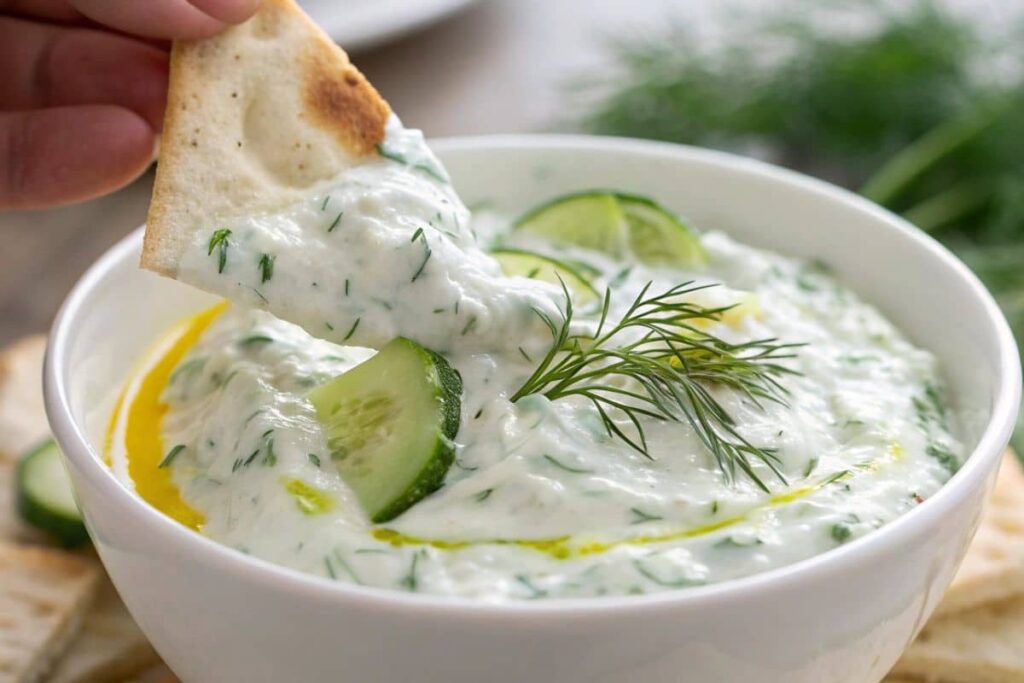
Adding Crunch to Sushi Rolls 🍣
The crisp texture of this cucumber makes it a perfect addition to homemade sushi rolls. Slice it into thin strips and roll it up with rice, nori, and your favorite fillings for a refreshing crunch in every bite.
Storing Cucumbers: What You Need to Know 🥒
While these cucumbers are resilient in the garden, they need proper care when it comes to storage. Keep them in the fridge, preferably in a sealed container or plastic bag to maintain their freshness and crunch for longer.
How Long Do Persian Cucumbers Last?
When stored properly, Persian cucumbers can stay fresh for up to 10 days.
- In the Fridge: Wrap them in a paper towel and place them in a breathable bag in the crisper drawer.
- At Room Temperature: They’ll last 1–2 days, but refrigeration is best.
Can You Freeze Persian Cucumbers? Pros and Cons
Freezing cucumbers isn’t ideal for raw consumption since they become mushy. However, frozen cucumbers work well in smoothies or soups.
- How to Freeze: Slice them, lay them on a baking sheet, freeze until solid, then store in a freezer bag.
💡 Pro tip: Add frozen Persian cucumber slices to water for a refreshing drink.
Persian Cucumbers and Skin Care
Yes, you read that right—Persian cucumbers aren’t just good for your body but also your skin!
DIY Face Masks with Persian Cucumbers 🥒✨
Blend fresh cucumber with yogurt and a touch of honey for a cooling, hydrating face mask—like a spa day for your skin! This natural remedy soothes redness, hydrates deeply, and leaves your skin with a healthy glow.
Benefits of Cucumber-Infused Water for Skin 💦
Adding thin slices of cucumber to your water isn’t just trendy—it’s packed with skin-loving benefits. The antioxidants help flush toxins, while the extra hydration works wonders for your complexion, promoting a clear and radiant look.
Addressing Common Problems with Cucumbers
Even the perfect cucumber can run into a few issues. Let’s tackle the most common concerns and how to fix them.
Why Do Some Cucumbers Taste Bitter?
Ever taken a bite and been surprised by a bitter flavor? This happens due to cucurbitacins, natural compounds that can build up when plants experience stress—like irregular watering or extreme temperatures. To avoid bitterness, choose firm, evenly colored cucumbers and store them properly.
Solution:
- Make sure Persian cucumbers are grown in consistent conditions, with regular watering.
- Peeling the skin can also help, as bitterness tends to concentrate there.
How to Revive Limp Persian Cucumbers
A limp cucumber is no fun. This usually happens when cucumbers lose moisture over time.
Solution:
- Soak the cucumber in ice water for 20–30 minutes to restore its crispness.
- Store Persian cucumbers in the fridge, wrapped in a paper towel, to prevent them from drying out.
Final Thoughts: Why Persian Cucumber Deserves a Spot in Your Kitchen
Persian cucumber is more than just a crunchy snack—it’s a versatile ingredient, a hydration booster, and even a natural skincare hack. Unlike regular cucumbers, Persian cucumbers have a sweeter flavor, thinner skin, and almost no seeds, making them perfect for raw dishes or light cooking. Curious about the difference? Check out what is the difference between a cucumber and a Persian cucumber?
Are baby cucumbers and Persian cucumbers the same? Not entirely! While they may look alike in size, Persian cucumbers are known for their smooth skin and subtly sweet flavor that make them stand out. Want to know more? Let’s explore what makes Persian cucumbers unique!
If you’re watching your calories, Persian cucumbers are a guilt-free option with only 15 calories per 100 grams! Need more details? Find out about the calories in Persian cucumber and how they can fit into your diet.
Finally, if you’re feeling inspired to pair Persian cucumber with a hearty meal, why not try an old-fashioned chicken and rice casserole? It’s a classic dish that complements the refreshing crunch of Persian cucumber.
Whether you’re snacking, cooking, or adding it to your skincare routine, Persian cucumber is a must-have in your life. Ready to dive into its benefits? Go ahead and enjoy all the goodness it has to offer!
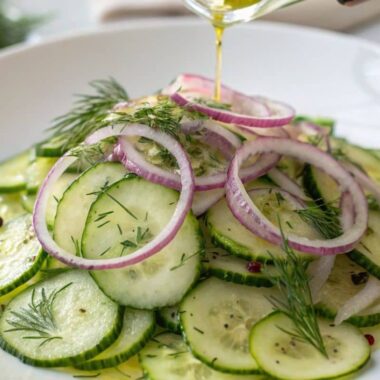
Persian Cucumber and Dill Salad
Ingredients
For the Salad
- 4 Persian cucumbers, thinly sliced
- 2 tablespoons Fresh dill, chopped
- 1 small Red onion, thinly sliced
- 2 tablespoons Olive oil
- 1 tablespoon Lemon juice
- 1 clove Garlic, minced
- to taste Salt and pepper
Instructions
Preparation
- Slice the cucumbers and red onion thinly. Place them in a large mixing bowl.
- Add the chopped dill to the bowl.
- In a small bowl, whisk together olive oil, lemon juice, minced garlic, salt, and pepper.
- Pour the dressing over the cucumber mixture and toss until everything is evenly coated.
- Let the salad sit for 10-15 minutes in the fridge before serving to let the flavors meld.


